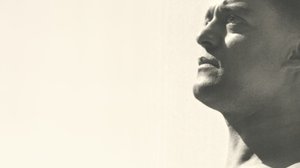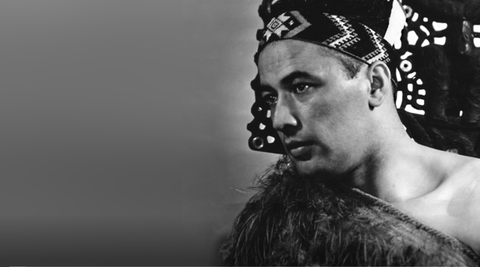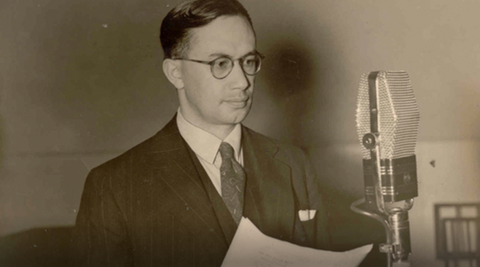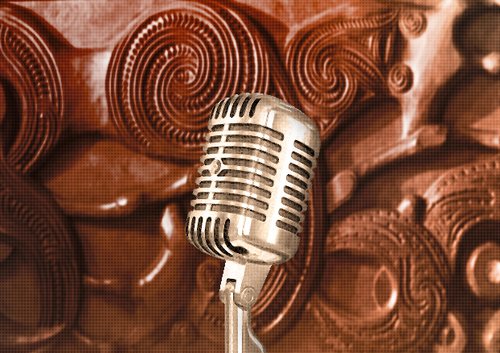
This exhibition lets you hear again the broadcasters who championed te reo Māori on radio from the early days when most recordings consisted of entertainment items, through the 1940s when the first regular fully te reo radio programmes began, and on to the Māori cultural renaissance of the 1970s and the push for more Māori language programmes.
Te Reo Pāpāho is the third of four exhibitions from Ngā Taonga Kōrero, the archive of RNZ’s Māori radio programmes.
1927 - 1945
Radio broadcasts began in New Zealand in 1921 but it appears the first extensive use of te reo Māori on air didn’t really eventuate until 1927. In that year songs and items by the Petone Māori Variety Entertainers and performances from the Ōtaki Māori College aired on Wellington stations.
The following year on Waitangi Day 1928, an elaborate pageant of Māori history, song and story was broadcast on all four national stations and was repeated for an international audience via shortwave radio. It was considered New Zealand’s most widely broadcast programme of its time.
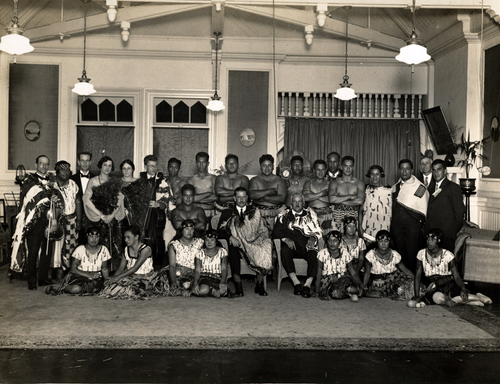
Whanganui performers who took part in the 'Pageant of Māori History' - broadcast on 2YA, 06 February 1928 (Ngā Taonga Sound & Vision Collection)
Also in this year a Māori speaking Pākehā announcer J.F. Montague made broadcasts aimed at correcting and improving what he believed to be the atrocious pronunciation of Māori words. In 1929 Ngāpuhi historian Hare Hongi (aka Henry Stowell) took over presenting Montague’s programme. Māori performance groups like the Māori Native College Choir were often invited to perform on the National network.
Sadly there are no recordings of these early radio broadcasts, because disc recording equipment was not purchased by New Zealand broadcasters until the mid-1930s. This meant apart from commercial music recorded on 78 rpm acetate discs, all radio broadcasts simply went out live-to-air, and were not recorded in any way.
In the mid-1930s, Professor James Shelley, Director of Broadcasting, appointed a Māori broadcaster to each of the four stations in the newly set-up National Commercial Broadcasting Network, under Colin Scrimgeour. They were Lu Paul of Ngāti Whātua at 1ZB based in Auckland. He was followed by Kīngi Tahiwi from Ngāti Raukawa at 2ZB in Wellington, Te Ari Pitama of Ngāi Tahu at Christchurch’s 3ZB and Airini Grennell who was of Ngāti Mutunga, Ngāti Tama and Ngāi Tahu descent, at 4ZB, Dunedin. She was also a granddaughter of well respected kaumatua Hone Taare Tikao. Sadly both Kīngi Tahiwi and Lu Paul were killed in action during World War Two, and were much-mourned by radio listeners Another Māori announcer Oriwa Tahupotiki Haddon (Ngāti Ruanui) was also appointed by Shelley, and produced his own programme [in English] “Oriwa’s Māori Session” in the years leading up to World War II.
These were bitter sweet appointments, for although the four commercial network Māori announcers were fluent speakers of te reo, their use of the language was restricted to entertainment items, (they were all accomplished singers) introductions and sign offs as it was felt any wider use of the Māori language would alienate the Pākēha radio audience and the non-reo speaking Māori audience.
Broadcast historian Hēnare Te Ua referred to the appointment of the first four Māori announcers as tokenism in his 2000 radio documentary, Te Reo ō Te Tangata Whenua – The Story of Māori Radio.
Hēnare Te Ua - Excerpt from 'Resounding Radio'
However, by the late 1930s, some special Māori-focussed events began to be covered by radio such as the opening of Tūrongo House at Tūrangawaewae Marae and the investiture of Te Kirihaehae Te Puea Herangi in 1938. This was often at the insistence of politician Sir Apirana Ngata, who felt that making sound recordings of whaikōrero, haka and waiata performed at such events was a way to preserve Māori oral culture.
There was also a large amount of te reo content in the official broadcasts marking the centennial of the signing of The Treaty of Waitangi in 1940. These radio programmes tended to have English interpretations and commentary smattered throughout to explain proceedings to a non-Māori speaking audience. Māori commentators like Charles Bennett and others were employed to further enlighten the listeners by interpretting what was being said and describing the activity on the marae.
Whaikōrero by Te Kiri Katipa with commentary by Charles Bennett - Excerpt from 'Opening of Tūrongo House (Part Three)'
The first regular broadcasts of a programme entirely in te reo Māori were not until 1940. This was a weekly news bulletin which came about only after Māori kaumātua lobbied Parliament for the service to keep older Māori who did not speak English, informed about the war and the activities of the famous 28th Māori Battalion. The programme was presented by Wiremu (Bill) Parker from Ngāti Porou and took the form of a weekly 15-minute update on Sunday nights during World War Two. He covered war news and read a casualty list as well as domestic Māori news. These programmes became appointment listening for Māori throughout the country. Ted Nepia (Ngāti Kahungunu) who would go on to have a career as a broadcaster after the war, was first heard on air in one of these wartime broadcasts, sending greetings from the 28th Māori Battalion in Italy.
Seargent Ted Nepia (05 Apr 1945) - Excerpt from 'Battle History of the Māori Battalion in Italy'
Wiremu Parker was eloquent in both te reo Māori and in English. An exemplary broadcaster whose career spanned some 40 years on the air waves, Parker made the vow to never use non-Māori words in these early broadcasts and became quite inventive with his transliterations. Sadly, none of his wartime bulletins have survived, as due to wartime shortages, very little radio was recorded to conserve resources. Precious recording discs were saved for capturing messages and broadcasts from soldiers in the field, such as the one by Ted Nepia above.
1946 - 1980s
The presence of te reo Māori on the national air waves increased slowly in the years after World War II but programming solely in te reo was still confined to once-a-week broadcasts for several decades.
There was more Māori content on the air, but a lot of it was still mainly narrated in English. Following on from the formative years paved by the pioneer announcers mentioned in part one of this exhibition, new Māori programmes were developed and their durations were increasing.
Ngā Pao me ngā Pakiwaitara ā te Iwi Māori: Song and Story of the Māori drew on the earlier recordings by the New Zealand Broadcasting Service of significant Māori events through the 1940’s. These programmes were narrated in English by announcers Ulric Williams, Clive Drummond and Airini Grennell (Ngāti Mutunga, Ngāti Tama, Ngāi Tahu) and featured on air from 1949 through to 1958. They were also broadcast overseas via shortwave.
From the late 1950s, Te Reo o te Māori was produced and presented by returned Māori Battalion veteran Ted Nēpia (Ngāti Kahungunu) to an appreciative audience in the Hawke’s Bay region. When the New Zealand Broadcasting Corporation set up a Māori programmes section headed by Leo Fowler, Nepia’s programme was networked nationwide. Leo Fowler had formerly been the manager of the Gisborne radio station 2XG and was lobbied by leading kaumātua of the area to increase Māori programming. He was able to affect further change and an increase in Māori content in 1964 when he and Wiremu Kerekere moved to Wellington to lead the new the Māori programmes section within the NZBC.
Fowler was respected by Māori leaders on the East Coast including Hetekia Te Kani Te Ua and Rongowhakaata Halbert. He had recruited the services of Wiremu (Bill) Kerekere (Te Aitanga ā Māhaki), an accomplished linguist, musician and songwriter as well as the leader of the renowned Waihīrere Māori Club. Kerekere played the role of announcer as well as the assistant and cultural advisor to Fowler. Both men became a common sight making recordings at many hui, tangi and cultural events of national significance. Kerekere became the head of Māori programming following Fowler’s death in 1976.
Apart from programmes by Ted Nepia, te reo Māori was still struggling to be heard extensively on the airwaves during the 1960s and in everyday life, being confined mainly to marae and formal settings. The cultural and language revival was still yet to gather momentum. Māori show bands of the day like The Howard Morrison Quartet, the Māori Hi Fives and The Quin Tikis proved popular with radio audiences.
With the 1970s, new Māori broadcasters starting coming onto the airwaves; Herewini Murupaenga aka Selwyn Muru (Ngāti Kurī), Haare Williams (Te Aitanga ā Māhaki, Ngāi Tūhoe), Whai Ngata (Ngāti Porou) and Hāmuera Mitchell (Te Arawa) all produced and presented material for the NZBC, (which became Radio New Zealand in 1976.)
Obituaries of noted Māori leaders continued to provide Māori language content, but in the 1970’s still less than 90 minutes per week in te reo Māori was going to air through the state broadcaster.
Selwyn Muru succeeded Ted Nēpia as the host of the main Māori language programme in 1975, with the name changing to Te Reo o te Pipiwharauroa. It stayed on air into the mid 1990s. In 1971 Muru also began producing Te Puna Wai Kōrero, a programme in English highlighting Māori stories from Auckland and the Far North, He produced it until 1978 when Whai Ngata took over the role. Ngata covered a myriad of topics from explaining ancient Māori waiata through to the occupation of Takaparawhau or Bastion Point, memoirs of 28th Māori Battalion members and the rise of Māori gangs of the time.
Haare Williams was instrumental in establishing Te Reo ō Aotearoa,(the Māori unit under the umbrella of Radio New Zealand) as general manager in 1978 with programmes produced in te reo Māori and several Pacific Island languages. His flagship programme was He Rerenga Kōrero, produced at first in English but increasingly with greater te reo Māori content. He was succeeded as manager by broadcaster and historian Hēnare Te Ua who also produced He Rerenga Kōrero and Whenua! which he co-hosted in English with Libby Hakaraia until his retirement in 2000.
Through the 1970s and 80s the number of Māori broadcasters grew. Names like Derek Tini Fox (Ngāti Porou), Purewa Biddle (Ngāi Tūhoe), Te Pere Curtis (Te Arawa), Bina Peita (Ngāpuhi), Te Aniwaniwa Bosch (Ngāpuhi) and Piripi Walker (Ngāti Raukawa) to name a few, Increasingly te reo Māori was featuring on the regional and national airwaves and also increasingly on television.
The Māori cultural renaissance of the 1970s meant the scene was being set for the emergence of iwi-based radio stations starting in the early 1980’s, and the growth of radio programmes being made in te reo Māori, by Māori, for Māori.
Listen to the broadcasters who championed te reo Māori on the radio in Aotearoa.
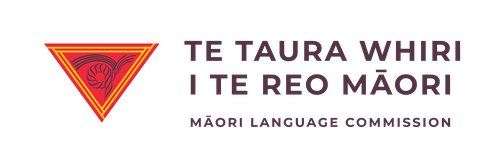
This exhibition is generously supported by Te Taura Whiri i te Reo Māori.
